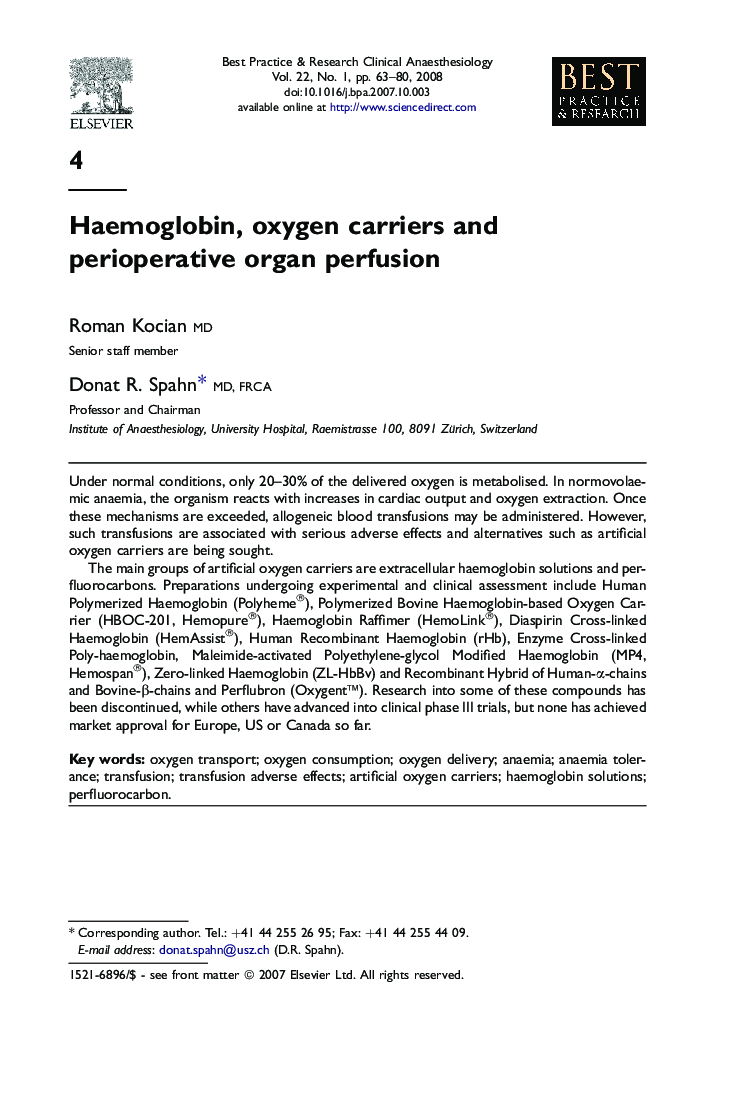| Article ID | Journal | Published Year | Pages | File Type |
|---|---|---|---|---|
| 2748824 | Best Practice & Research Clinical Anaesthesiology | 2008 | 18 Pages |
Under normal conditions, only 20–30% of the delivered oxygen is metabolised. In normovolaemic anaemia, the organism reacts with increases in cardiac output and oxygen extraction. Once these mechanisms are exceeded, allogeneic blood transfusions may be administered. However, such transfusions are associated with serious adverse effects and alternatives such as artificial oxygen carriers are being sought.The main groups of artificial oxygen carriers are extracellular haemoglobin solutions and perfluorocarbons. Preparations undergoing experimental and clinical assessment include Human Polymerized Haemoglobin (Polyheme®), Polymerized Bovine Haemoglobin-based Oxygen Carrier (HBOC-201, Hemopure®), Haemoglobin Raffimer (HemoLink®), Diaspirin Cross-linked Haemoglobin (HemAssist®), Human Recombinant Haemoglobin (rHb), Enzyme Cross-linked Poly-haemoglobin, Maleimide-activated Polyethylene-glycol Modified Haemoglobin (MP4, Hemospan®), Zero-linked Haemoglobin (ZL-HbBv) and Recombinant Hybrid of Human-α-chains and Bovine-β-chains and Perflubron (Oxygent™). Research into some of these compounds has been discontinued, while others have advanced into clinical phase III trials, but none has achieved market approval for Europe, US or Canada so far.
